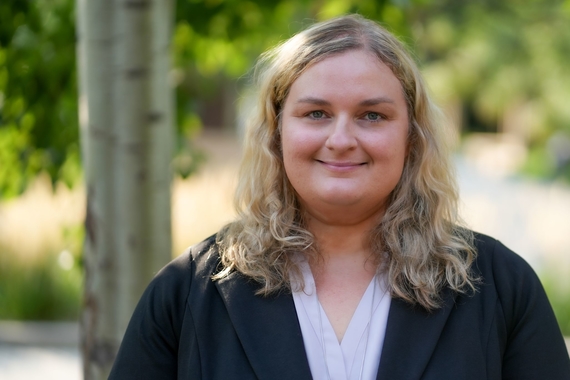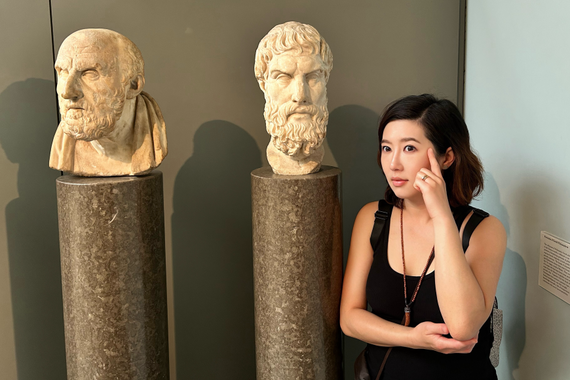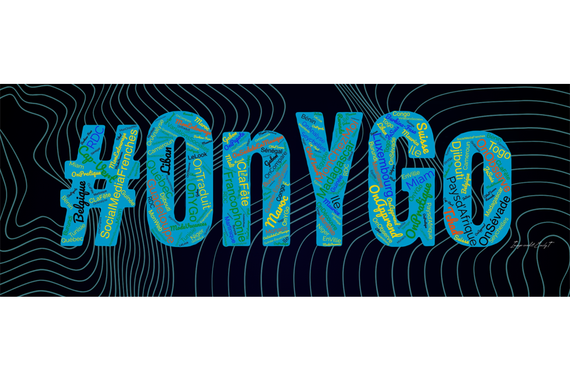Far from Remote: Zooming with Advanced Students of French at the U
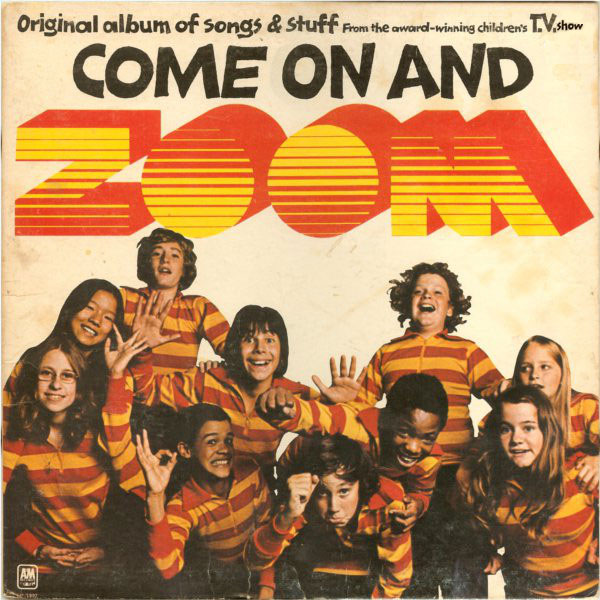
My first reaction to Zoom for remote learning was quite Proustian, as the name brought back memories of a TV show largely created by kids for kids on American public television during the 1970s. The theme song which the kids sang at the start of every half-hour episode was:
We’re gonna Zoom, Zoom, Zoom-a Zoom, come on and Zoom-a, Zoom-a, Zoom-a, Zoom! Come on give it a try, we’re gonna teach you to fly high!
Flying high was exactly what my advanced students at the University of Minnesota ended up doing during our Zoom sessions for French 3016, Advanced French Composition and Conversation, a required bridge course for French Majors and Minors at the University of Minnesota. They were comfortable with distance learning from the get-go and eager to maintain their connections to classmates and their teacher. The light-hearted competitive nature between the two sections of the course remained from March to May as we zoomed and learned together.
When students created graphic novels inspired by the theme of “dépaysement” in the third volume of Marjane Satrapi’s Persépolis, they were eager to share their artwork and receive virtual accolades from their peers. Because students had ample time on their hands, most opted to create a graphic novel, which was a stark contrast to the number of graphic novels created during a live semester. This first assignment during virtual learning provided a great creative outlet during the pandemic, with most students choosing to hand-draw their submissions. The Zoom sessions kicked off with a discussion post requiring students to define “dépaysement,” a perfect topic for virtual classes held during a stay-at-home order in Minnesota. Our unusual circumstances led us to understand how one could feel “dépaysé” even in one’s home country, with one student writing the following: "Je pense que presque tous ceux qui ont déjà fréquenté une université aussi grande que l'Université du Minnesota savent ce que c'est que de vivre le dépaysement."
During this period of “la pandémie,” when we were all stuck at home with a few select people, mostly family members and pets (some of whom made cameo appearances on Zoom), everyone was eager to communicate virtually as often as possible. Students thanked me for keeping up class synchronously (3 fifty-minute classes per week) and lamented professors who had decided to record lectures or switch completely to asynchronous assignments with no recorded lectures at all. When I joked about recording grammar explanations, instead of balking at having to listen to them, students gave me tips on how to make such explanations more engaging and especially how to chunk them into small segments, no longer than 10 minutes, but ideally 5 minutes or less.
I figured no one would listen to my lame jokes about grammar, but instead students listened several times and told me they enjoyed hearing me turn pages in the grammar book, which alerted them where to look as I was presenting material. Things take longer to explain on Zoom, so with the surprisingly treasured recordings, students then showed up on Zoom with highly specific questions and were even more prepared to discuss grammar points than during a live class session. They felt extremely accountable for grammar points because of the formal recordings, which were coupled with online tests.
It was interesting for me to note that so great was their desire to keep learning, despite this new format, that they even welcomed the online tests and took them very seriously, studying for them as usual, even though they knew I could not physically see them if they consulted their course materials. One student wrote to me to confess that she’d looked at the grammar book during the test! Even though I lamented to colleagues that the online tests I had designed were easier than the paper ones, I came to realize that students were also learning in new ways during remote teaching.
The over-preparedness on the part of students for grammar lessons was equally true for preparing short readings in the course. In a live class, students would merely do the readings and then we would break up into small groups to work on questions, and I would circulate between the groups. Now, students formed their own communities outside of class, working in small groups to diligently fill out their answers to reading comprehension questions featured on google docs. I learned about a host of ways they could contact each other virtually outside of class (beyond FaceTime, which I use to communicate with my son while he is away at college). I have never seen students this over-prepared for discussions of readings in my 30 plus years of teaching French (I began as a drill master for lower-division French in college).
By the end of the spring semester, I figured students were tired, and told them they did not have to contact their partners to work on the last of the reading comprehension questions on the google doc, but that instead we would work on these questions during our Zoom session, using the break-out rooms function. Instead, they all completed the questions, and again were over-prepared for that particular reading! Such over-preparedness meant we could easily delve deeper into each reading. Students had French vocabulary at the ready and felt more confident in speaking extemporaneously during Zoom sessions. Those who may have been shy during a live class shined during Zoom sessions, which put everyone on an equal, virtual footing. Students were grateful when their peers volunteered answers, because silence on Zoom is more painful than live silence!
Another assignment that students really enjoyed was recording a live dialogue with their classmates, either using the record function on Zoom or working with another platform. Because we were all blocked from having live conversations in a café, students held remote conversations in a virtual café. In particular, they were asked to mimic the style and tone of Louis-Sébastien Mercier, author of an anti-guide to the City of Light entitled Tableau de Paris (1781). Students were asked to provide criticisms of a city with which they were familiar. These recorded videos or audio files were engaging and a pleasure to listen to. They were particularly meaningful to students whose study abroad experiences for the summer and fall were slated to be compromised.
What else have I learned about today’s typical college student when using Zoom to teach? Students are extremely comfortable with technology. I wanted to entertain them with virtual backgrounds which would change according to the topic of the class period, and they, along with my son, were eager to explain how to set up virtual backgrounds on Zoom. Students want to learn, and they want to find ways to keep speaking French even with the pivot to remote learning. The motivation was still there for my students, as they even still showed up to virtual office hours.
With my encouragement, they checked in with their virtual partners in the class several times a week and not just to complete group assignments for the course. They even often stayed after class on Zoom, particularly when I wanted their input on the set-up for online tests and fair due dates for assignments. Our community of French speakers grew particularly strong during these after-class sessions, in which I demonstrated how much I valued their input on remote learning. Student evaluations at the close of the term emphasized my willingness to be flexible during the remote classes and eagerness to listen to their opinions. One student appreciated how much time I spent grading online, which I must admit, was a time-consuming experience for me. She nominated me for a Thank a Teacher award, granted by the Center for Educational Innovation at the U, writing in French:
J'adore votre enthousiasme et énergie quand vous enseignez! Je pense que ça nous aide tous a être plus joyeux pendant le cours! Merci aussi pour tout le temps que vous passiez à corriger nos rédactions et compositions! Ça doit prendre beaucoup de temps.
I am including this comment here not to toot my own horn, but rather to remind colleagues that we often inspire our students in ways that may surprise us. In this case, I learned that all of the corrections and suggestions that I was making on French papers were doubly significant during virtual teaching. All contact between students and their teacher was precious and a motivating factor for continuing to learn.

There are always silver linings to any dire situation, including a pandemic. I have two which I’d like offer as my final, positive nod to Zoom. On the last day of French 3016 during the spring semester, my virtual background was the bridge of the Starship Enterprise, with myself seated in Captain Kirk’s chair and surrounded by crew members. Luckily, students recognized this 1960s iconic show. I told students that I chose this Star Trek background for the last day (versus “le sommet” of the Eiffel Tower, for example) because I actually did not expect anyone to show up since it was the last hurrah for Zoom for the semester. I also told them that I hesitated to don my Halloween costume of Lieutenant Uhura on Zoom, and they said they were sad that I only had the props of the communicator and the phaser. They all showed up on the last day, as they had every day! This included the student who had confessed to me early on that he was being lazy and had skipped a few of the 9 o’clock sessions. It was funny to observe that some students did audio only for the 9 o’clock session, while for the 10 o’clock session students were awake enough to be on video.
My second silver lining involves how I got back to Zooming with advanced students over the summer in a 6-week advanced course on literature and film entitled French 3650: Topics in French/Francophone Cultures: French Authors Explore the Human Experience. We would not have read La Peste by Albert Camus if we were not in the midst of a pandemic, and we certainly would not be discussing this timeless text via Zoom under normal, non-social-distancing circumstances. The bulk of the students who took the summer course with me were from my spring sections of French 3016. Many of them wrote to me asking what they could do to keep up their French over the summer since they could not travel. In one of many weekly journal entries for this course, a student did an amazing job of answering the following question:
Qu'est-ce que j'ai appris sur l'expérience humaine et/ou les relations humaines de ma lecture cette semaine?
The student went so far as to say that she had forgotten what a live class was like, while at the same time appreciating the universal nature of a pandemic, referencing the Camus text from 1947:
Un passage qui était très profond pour moi était à la page 236, quand M. Othon voulait rester au camp pour aider les malades. M. Othon a expliqué que ‘je me sentirais moins séparé de mon petit garçon’ (236). Cette citation me montre qu’une tragédie peut changer l’expérience humaine. Quand M. Othon a dit cela, Tarrou était très choqué, ce qui montre qu’aider les autres (particulièrement pendant la peste) n’était pas une habitude pour M. Othon. La mort de son fils, cependant, lui a fait voir la vie sous un angle nouveau. À cause de notre pandémie de 2020, je pense que beaucoup de personnes vont avoir la perspective différente dans la vie. Notamment, pour moi, je peux plus apprécier des choses dans ma vie--parce que je ne sais pas si ces choses vont disparaître. Par exemple, je ne pense pas que j’aie apprécié l’opportunité d’aller aux cours, mais maintenant c’est difficile d’imaginer avoir des cours dans une salle de classe!
For the first time ever in one of my French courses at the U, all of the readings, including La Peste, were digitized editions, so students never had to leave their homes to access course materials. Nonetheless, students enjoyed seeing my edition of Camus’s novel, which I had purchased in my college’s bookstore in the 1980s!
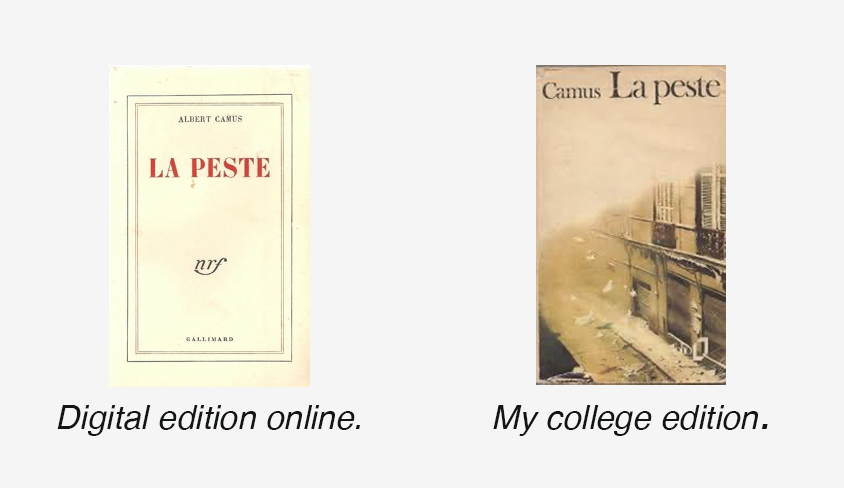
The first discussion post for French 3650 consisted of ideas for Ma chronique imaginaire pendant la pandémie, which would echo the Camus text. For these students, Zoom remains synonymous with the pandemic, though not necessarily as a bad addition to their lives:
Dans ma chronique, je devrais ajouter le moment où j'ai reçu l'email de Gabel que les étudiants ne pouvaient pas retourner au campus. J'avais très peur et je voulais retourner après les vacances de printemps. Après, je devrais ajouter le moment où j'ai dû être confortable avec Zoom et la vie à ma maison encore. Ensuite, je dirais comment mon été était différent de celui que j'attendais, mais j'ai appris comment prendre les choses comme elles viennent.
Taking things as they come was why another student described new interactions with his remote friends: "Nous essayions de faire des ‘Zoom hangouts.’" A third student basked in the ability to sleep in and still not miss class: "Je me réveillais cinq minutes avant le début de tous mes cours sur Zoom." For this course, students wrote on their teaching evaluations the following positive statements about Zoom: "Good use of the break-out rooms allowed me to practice my conversations without being in person" and "The Zoom classes helped us feel connected still and made it feel more like a regular class!" Students in this summer course welcomed lots of homework and did not even mind taking lengthy Canvas quizzes on the various films we watched, which I had created out of guilt for the course being fully remote! I was hoping the quizzes could compensate for the loss of the communal viewings of films.
The creativity displayed in the final projects for this group of a dozen students over the summer was beyond a teacher’s wildest imagination: videos, paintings, drawings, photos, accompanied by artist’s statements! The project was to describe what it means to live a good life, even in the most difficult of circumstances. With my students, I have gone from the theme of “dépaysement” to “pandémie” and Zoom has been our faithful companion all along the way. The final frontier for language teachers used to teaching live is the realization that it’s better to speak virtually than not at all. Zooming with students needs to be seen less as an exercise in science fiction and more as a timely method of keeping French alive and well in the American university setting. Or, as a student wrote so aptly on their teaching evaluation for French 3650: "I would recommend finding a way to escape the mindset of online courses being unimportant."
